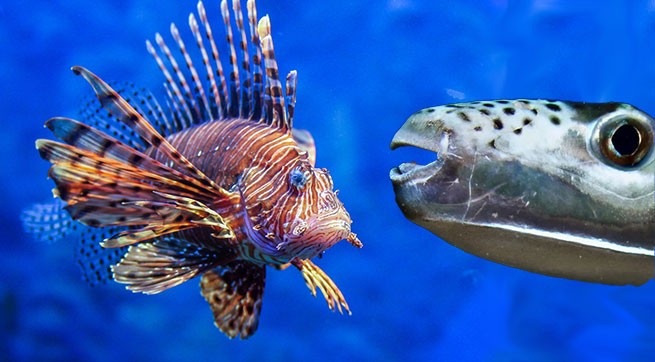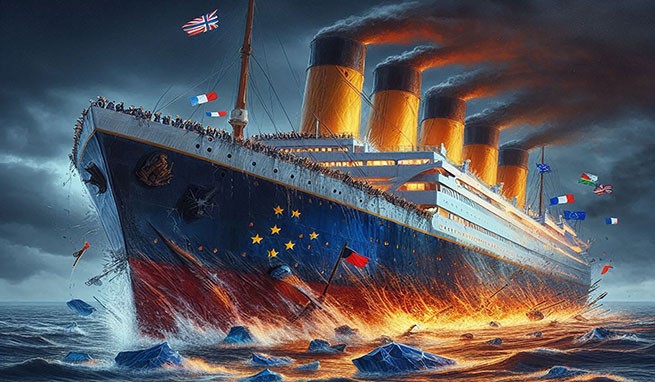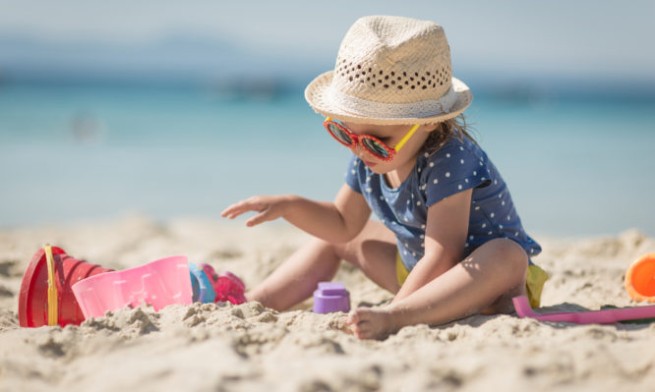Children's careless play in sand and water can become a source of transmission of viruses and bacteria, which often cause infections. Sometimes they are mild and go away on their own, and sometimes they are more serious and require systemic treatment.
This is why it is recommended that children sit on a towel when playing in the sand rather than staying in a wet swimsuit. However, this is easier said than done. Dermatologist and venereologist Katerina Lambrinopoulou explains which skin infections most often occur in children playing on the beach and how to treat them.
1. Pyoderma (Μολυσματικό κηρίο) is a bacterial infection. Most often it is caused by Staphylococcus aureus, less often by Streptococcus pyogenes. This usually shows up on the face. However, it can develop in any area of the body.
Initially, the lesion takes the form of a blister that spreads and often develops into an eschar (a hard crust over the wound). There are cases when the skin lesions are extensive. It may be accompanied by symptoms such as pain and itching.
If the disease is mild, it is adequately treated with topical antibiotic cream after removing the scabs and sterilizing the affected area. For extensive skin lesions, systemic (oral) antibiotic treatment is prescribed. If the infection recurs, the patient should be looked for for staphylococcal lesions. This is done by taking a sample from the nose. It is also necessary to exclude the possibility of a new infection from another person or place where the child may play.
2. Molluscum contagiosum (Μολυσματική τέρμινθος) – a skin lesion caused by a virus of the same name. In young children, the disease can appear on any part of the body. It is characterized by groups of pinkish papules with a depression in the center. Virus transmission spread through pool water. The risk of infection increases significantly after injury. Apart from skin lesions, the disease does not cause any other symptoms. Treatment is not always necessary because terminosis infection usually goes away on its own. If treatment is required, mild cooling with liquid nitrogen or scraping of the surface of the skin on the affected area is recommended.
There is also a topical treatment with a cream specific to the disease, which must be applied strictly as directed by the dermatologist, as it can cause scarring.
3. Warts (Μυρμηγκιές) is a viral skin infection. They are caused by certain strains of the human papillomavirus (HPV). They appear on bare areas of the body, mainly on the soles and palms. Warts are usually not painful. However, spots on the soles can cause a foreign body sensation when walking. In children, the disease largely resolves on its own. But this rarely happens with warts on the soles of the feet.
Treatment is carried out with liquid nitrogen, which freezes the skin lesions. As a result, the wart dies and falls off. You can also use a laser, which has the same effect but uses heat. Finally, warts can be treated with liquids/mixtures prescribed by a dermatologist.
4. Fungal infection. There are three groups that infect humans: anthropophilic, zoophilic and geophilic, depending on the “host” that mediates the infection. Beach sand is a major source of fungal infections. It is responsible for fungal infections on the skin as well as on the nails. Wet swimsuits are also a cause fungal infections of the genital organs.
The development of the disease depends on the type of fungus that affects the skin. In anthropophiles, the lesion appears as a slightly scaly plaque. In zoophiles, the skin plate has a pink color and central healing. Fungal infections also cause itching, which can be intense. Antifungal drugs are prescribed to treat fungal skin infections. Antiseptic soap is also provided.
“To avoid unpleasant surprises, make sure that children do not sit directly on the sand or remain in wet swimsuits“, — advises Dr. Lambrinopoulou.







More Stories
Caution: Medicines That Increase the Risk of Sunburn
Diabetes: How much does risk increase for those who sleep in bright light at night?
Red Eyes: Learn about the 15 Most Common Causes